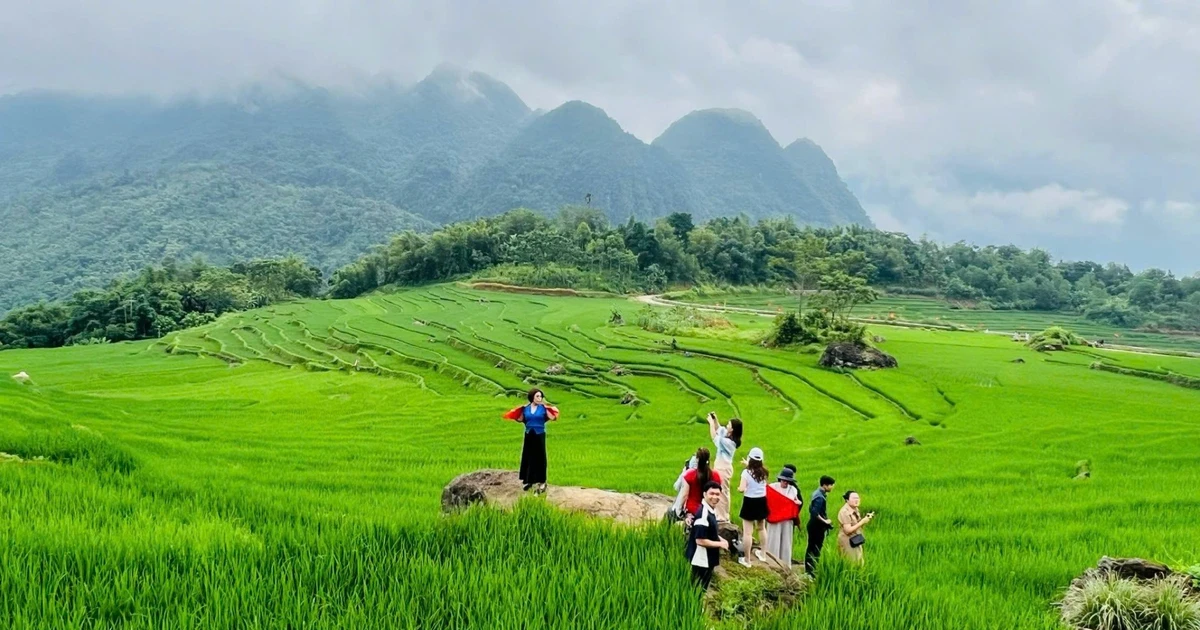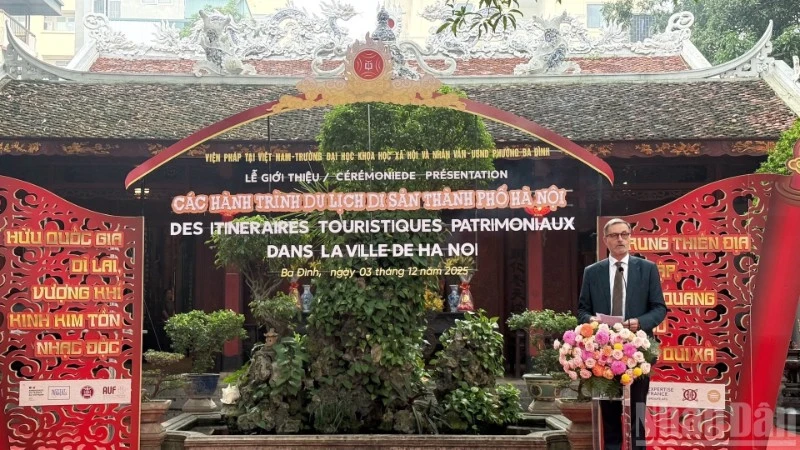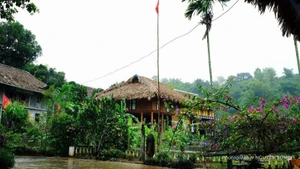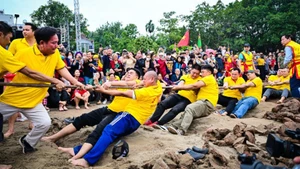Promoting its own identity
Since it was chosen to pilot the community-based tourism model, Khe Ran Village in Bong Khe Commune, Con Cuong District, has become an ideal destination for many tourists. All of Khe Ran villagers are Thai ethnic people.
Coming to Khe Ran, visitors can admire the simple, original stilt houses of the local Thai people, enjoy folk songs and dances, explore the daily lives of the local people, and sample the delicious traditional cuisine of the area.
Lo Huynh Lan, Director of Khe Ran Community-Based Tourism Service Cooperative, said that he and his neighbour Lo Van Tinh opened the first homestay in the village in 2015. Since then, the homestay has welcomed thousands of visitors every year.
In 2017, Khe Ran Community-Based Tourism Service Cooperative was established with 20 members, to facilitate the coordination and provision of tourist services among homestays in the village.
Currently, there are five homestays in Khe Ran Village. During the recent five-day holiday from April 30 and May 1, these homestays served more than 3,000 tourists.
Con Cuong is the leading district in regard to boosting community-based tourism in Nghe An Province. In addition to Khe Ran Village, the model has been promoted in Nua Village and Pha Village in Yen Khe Commune as well as Xieng Village in Mon Son Commune.
Vi Thi Thoa of Xieng Village said that her family's homestay has been operating since 2018.
The homestay has self-contained rooms that are fully equipped with basic amenities, with a capacity of serving 50 visitors per day.
Thoa regularly shares information and photos on social platforms such as Facebook and Zalo to promote the homestay to visitors.
Community-based tourism model has contributed to preserving and promoting traditional cultural values while boosting socio-economic development of the western Nghe An Province.
Vice Chairman of Con Cuong District People's Committee Pham Trong Binh
According to Vice Chairman of Con Cuong District People's Committee Pham Trong Binh, the community-based tourism model has contributed to preserving and promoting traditional cultural values while boosting socio-economic development of the locality.
In 2023, Con Cuong District welcomed more than 28,000 visitors, with total tourism revenue of 6.2 trillion VND.
Although the figures are not impressive, it is an encouraging result for a locality that is new to community-based tourism and is still facing many difficulties like Con Cuong District.
This provides motivation for the locality to continue improving its infrastructure, facilities and services to meet the increasing needs of tourists.
Ecotourism and community-based tourism are gradually creating a tourism brand in western Nghe An.
Many destinations in the area has now become popular among travel lovers, such as the Pha Lai Ecotourism Area, Khe Kem Waterfall, Pu Mat National Park (Con Cuong District); a crape myrtle forest (Tuong Duong District); a seven-tiered waterfall (Que Phong District); the tea hill (Thanh Chuong District); and Bua Cave (Quy Chau District).
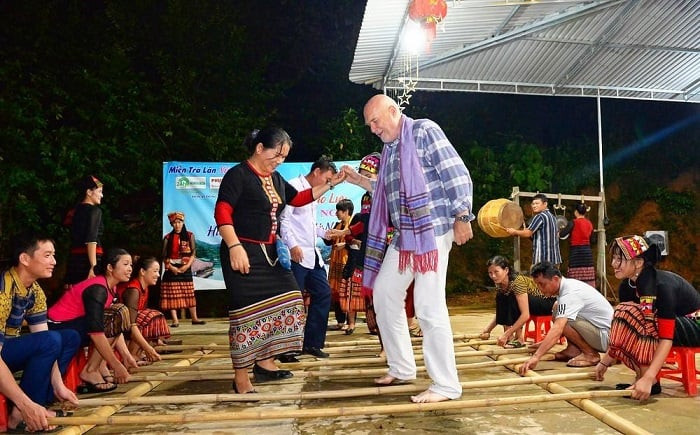 |
| A foreign visitor joins a bamboo pole dance with a local ethnic woman in Khe Ran Village |
Creating a travel route that connects multiple destinations
The community-based tourism model has been implemented in 23 villages in Nghe An Province, attracting the participation of 54 households serving homestay services. The model has created jobs and improved the incomes of local people, while contributing to preserving and promoting their ethnic cultural values.
However, experts point out that tourism products in the area are still simple. As the districts located in the same area share many similarities in culture, cuisine, and landscape, this can lead to a scenario in which the tourist products are mostly the same, with no outstanding features to make them unique.
Chairwoman of Nghe An Western Tourism Coordination Centre Company (TNT Tay Nghe Tourist) Vi Thi Tham suggested that districts with the similar tourism products should work together to set out appropriate and sustainable directions and solutions to diversify their products and services for tourists.
Each district should promote the cultural practices of local communities in order to put forward tourist products which can distinguish the locality from others.
For example, Con Cuong District should develop eco-tourism products which focus on highlighting the cultural identity of the Thai ethnic group. Tuong Duong District should prioritise on developing community-based tourism products which explore the culture and traditional crafts of the Kho Mu ethnic group. Ky Son District should take advantage of medicinal herbs and cultural experiences of the Mong ethnic group in designing tourist products. Meanwhile, Nghia Dan District should promote agriculture-based tourism.
On July 22, 2020, the Nghe An Provincial People's Council issued Resolution No. 07/2020/NQ-HDND, regulating a number of policies to support the development of community-based tourism in the area in the 2021-2025 period.
Under the resolution, six support policies were promulgated for three target groups, including supporting households in purchasing fundamental equipment and toilet equipment; supporting villages and hamlets in purchasing musical instruments and traditional costumes for cultural activities; supporting villages and hamlets in installing a system of tourist signs; and funding districts in providing training classes for people working in tourism and for tourism promotion activities.




